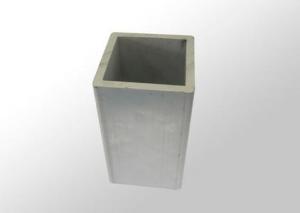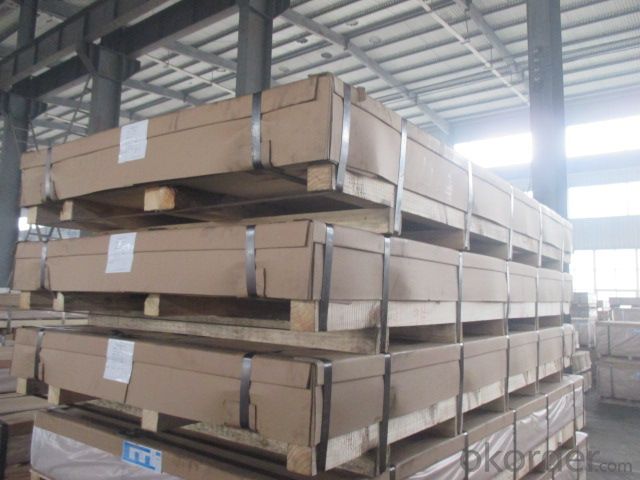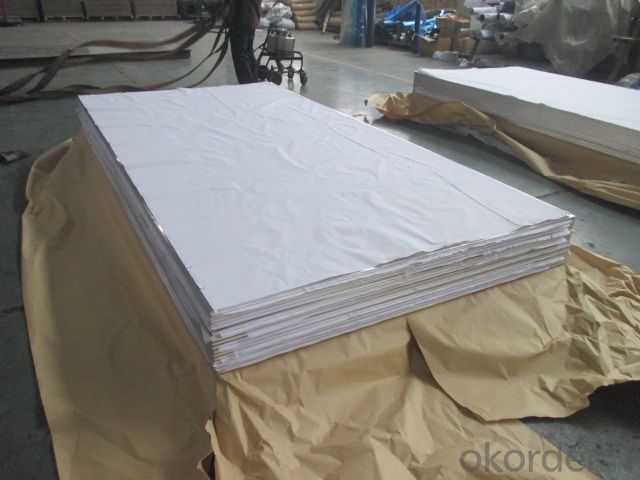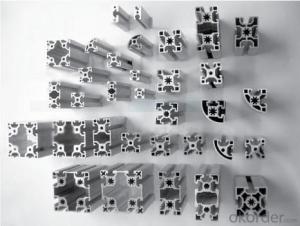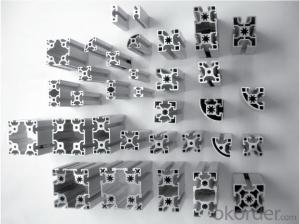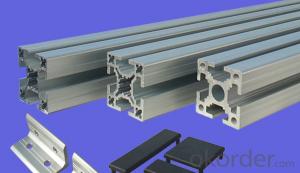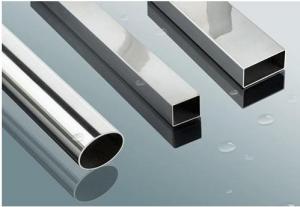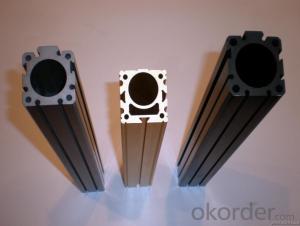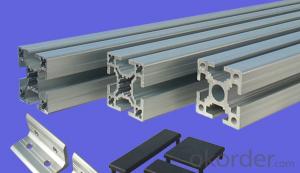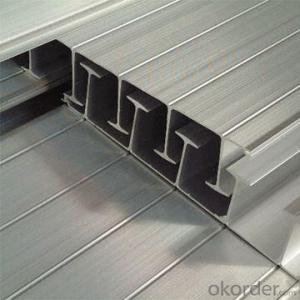Aluminum Extrusion Profiles 80/20 - Aluminum Sheet, Plate, Slab, and Other Grades Tempers
- Loading Port:
- Shanghai
- Payment Terms:
- TT or LC
- Min Order Qty:
- 7 m.t.
- Supply Capability:
- 5000 m.t./month
OKorder Service Pledge
OKorder Financial Service
You Might Also Like
1.Structure of Product Description
Cold rolled and hot rolled and cold drawn and hot drawn aluminum sheet is widely used in the field of construction field and decoration field, etc.
There are many different grades, such as: 1000 series, 2000 series, 3000 series, 5052,5754,5083,6061,6063,8011, etc.
The temper is include H14, H22,O,FO,H24, H44,H112,H114,etc.
2. Main features of the product
a.Competitive price
b.Frist-Class Service.
c. Shortest service.
3. Image.
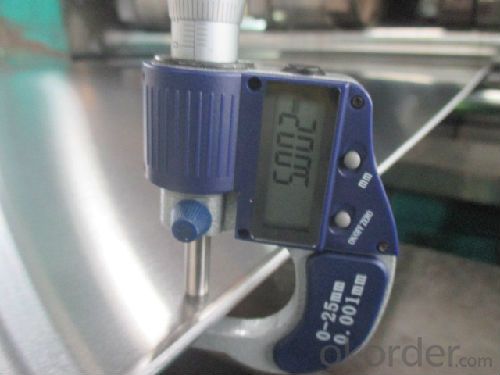
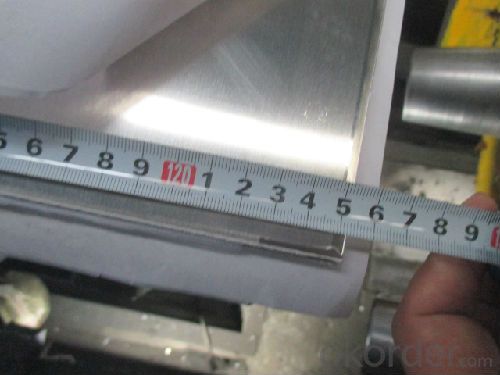
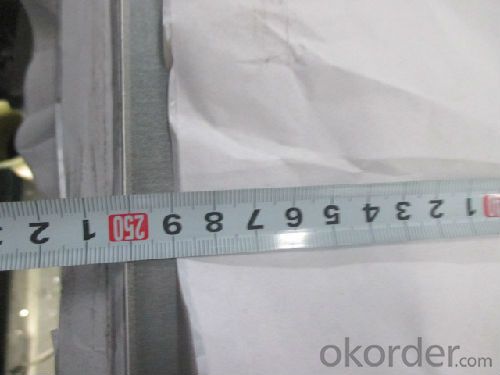
4. Product detailed sizes:
1000mm*2000mm, 1219mm*2438mm,1220mm*2440mm, 1000*1000,500*500,800*800,900*700mm,
1250mm*2500mm,1500mm*3000mm, etc.
5. FAQ:
What is the quality standard?
---Usually our standard is GB3880-2006 or others.
What is the width range?
---It is from 1000mm to 2500mm, etc.
---Normally it is around 9000 tons totally.
Where is your client from?
---Normally it is from Japan, USA, ENGLISH, SINGAPORE, ETC.
What is your mainly products?
---Normally they are aluminum sheet, checkered sheet, mirror finish aluminium sheet, aluminum casting coil, etc.
- Q: Is it possible to utilize aluminum profiles in the construction or structure of commercial buildings and factories?
- <p>Yes, aluminum profiles are commonly used in commercial buildings and factories due to their strength, durability, and lightweight properties. They are ideal for constructing frameworks, window and door frames, and support structures. The corrosion resistance of aluminum also makes it suitable for industrial environments where exposure to harsh chemicals or weather conditions is a concern. Additionally, aluminum profiles are easy to maintain and can be recycled, contributing to the sustainability of construction projects.</p>
- Q: Can aluminum profiles be used in the construction of data centers?
- Yes, aluminum profiles can be used in the construction of data centers. Aluminum profiles are lightweight, durable, and have excellent thermal conductivity, making them suitable for constructing data center enclosures and racks. They can provide structural support, facilitate cable management, and offer efficient heat dissipation, which is crucial for maintaining optimal operating conditions in data centers. Additionally, aluminum profiles can be easily customized and assembled, allowing for flexible and scalable designs to accommodate the ever-evolving needs of data centers.
- Q: How do aluminum profiles perform in load-bearing structures?
- Aluminum profiles perform well in load-bearing structures due to their high strength-to-weight ratio. They are lightweight, yet highly durable and resistant to corrosion. Additionally, aluminum profiles can be easily fabricated and customized to meet specific design requirements, making them an ideal choice for various load-bearing applications such as bridges, buildings, and aerospace structures.
- Q: How do aluminum profiles perform in terms of energy efficiency?
- Aluminum profiles are known for their excellent energy efficiency properties. They are widely used in various industries and applications, including construction, transportation, and manufacturing, due to their ability to contribute to energy savings and sustainability. One of the main reasons for their energy efficiency is the lightweight nature of aluminum. Compared to other materials like steel, aluminum profiles are significantly lighter, which means less energy is required for transportation and installation. This reduces the overall carbon footprint associated with the manufacturing and use of aluminum profiles. Additionally, aluminum has a high thermal conductivity, which allows for efficient heat transfer. This property is particularly beneficial in windows and doors applications. Aluminum profiles can effectively regulate the transfer of heat between the interior and exterior of a building, thereby reducing the need for excessive heating or cooling. This results in energy savings and reduced energy consumption. Furthermore, aluminum profiles can be easily integrated with additional energy-efficient components, such as thermal breaks and insulating materials. These additions further enhance the energy performance of aluminum profiles by minimizing thermal bridging and improving insulation, thus reducing energy loss. Moreover, aluminum is a highly durable and long-lasting material, which means that structures and products made with aluminum profiles require less maintenance and replacement over time. This durability contributes to overall energy efficiency by reducing the energy and resources needed for repairs and replacements. In conclusion, aluminum profiles are highly regarded for their energy efficiency characteristics. They are lightweight, have excellent thermal conductivity, can be integrated with energy-efficient components, and offer long-term durability. These qualities make aluminum profiles a sustainable choice that can contribute to energy savings and reduced environmental impact in various applications.
- Q: Fenglv aluminum material how ah? What aluminum materials do you use for windows and doors?
- Economic point of view, choose plastic film packaging materials. Yes, the price of the material must be more expensive, at one price per share.
- Q: Can aluminum profiles be used for shopfitting and retail displays?
- Certainly, shopfitting and retail displays can absolutely utilize aluminum profiles. Aluminum, being a versatile material, possesses the advantageous combination of lightweight properties with remarkable strength, making it an ideal choice for constructing structures and fixtures in retail spaces. The customization and fabrication of aluminum profiles are effortlessly achievable, enabling the creation of tailored designs to meet specific requirements, thus allowing for the utmost flexibility in developing diverse display and shopfitting solutions. Moreover, the sleek and contemporary aesthetic offered by aluminum profiles is frequently sought after in retail environments. Furthermore, their exceptional durability and resistance to corrosion guarantee their enduring presence in areas with high foot traffic. Overall, due to their versatility, strength, customization options, and aesthetic appeal, aluminum profiles are an exceptional selection for shopfitting and retail displays.
- Q: This question asks if aluminum profiles can be utilized in the construction of exterior walls and roofs.
- <p>Yes, aluminum profiles are commonly used in exterior walls and roofs due to their durability, corrosion resistance, and low maintenance requirements. They offer a lightweight alternative to traditional materials and can be designed to withstand various weather conditions. Aluminum profiles are also recyclable, contributing to their sustainability. They are often used in modern architecture for both aesthetic and functional purposes, such as in curtain walls, window frames, and roofing systems.</p>
- Q: This question asks if aluminum profiles can be utilized for the purpose of exterior wall insulation.
- <p>Yes, aluminum profiles can be used for exterior wall insulation. They are often used as a component in various insulation systems due to their durability, lightweight, and resistance to corrosion. Aluminum profiles provide a structural framework that can support insulation materials like mineral wool or polystyrene boards. They also facilitate the attachment of cladding, which can enhance the building's energy efficiency and weather resistance. However, it's important to ensure proper installation and compatibility with other materials in the insulation system to achieve optimal thermal performance.</p>
- Q: What are the differences between standard and non - standard shapes?
- Hello, not within the scope of the national standard, so it is called non-standard,The standard piece is within the national standardThat's the difference,This GB standard can be found, are unified
- Q: This question asks for a list of various aluminum profiles that are specifically designed or used for roofing systems in regions with cold climates.
- <p>In cold climates, aluminum profiles for roofing systems are selected for their durability, strength, and resistance to harsh weather conditions. Common types include: 1. Standing Seam Profiles: These are popular for their weather-tightness and resistance to snow and ice. 2. Trapezoidal Profiles: Known for their strength and ability to handle heavy snow loads. 3. Box Rib Profiles: These provide excellent structural integrity and are suitable for areas with high wind uplift. 4. Snap-Lock Profiles: Easy to install and offer good resistance to snow and ice. 5. Corrugated Profiles: Provide a traditional look while being cost-effective and offering good drainage. 6. Panel Rib Profiles: These are designed for long spans and can withstand heavy snowfall. Each profile has specific applications and advantages, and the choice depends on the specific roofing requirements and local climate conditions.</p>
Send your message to us
Aluminum Extrusion Profiles 80/20 - Aluminum Sheet, Plate, Slab, and Other Grades Tempers
- Loading Port:
- Shanghai
- Payment Terms:
- TT or LC
- Min Order Qty:
- 7 m.t.
- Supply Capability:
- 5000 m.t./month
OKorder Service Pledge
OKorder Financial Service
Similar products
Hot products
Hot Searches
Related keywords
